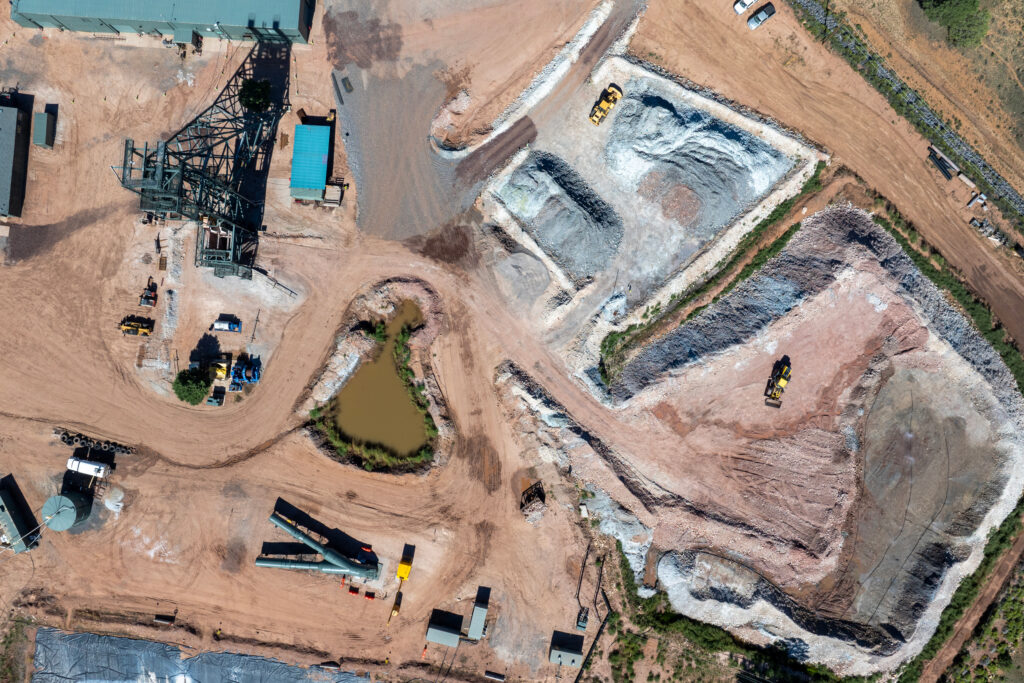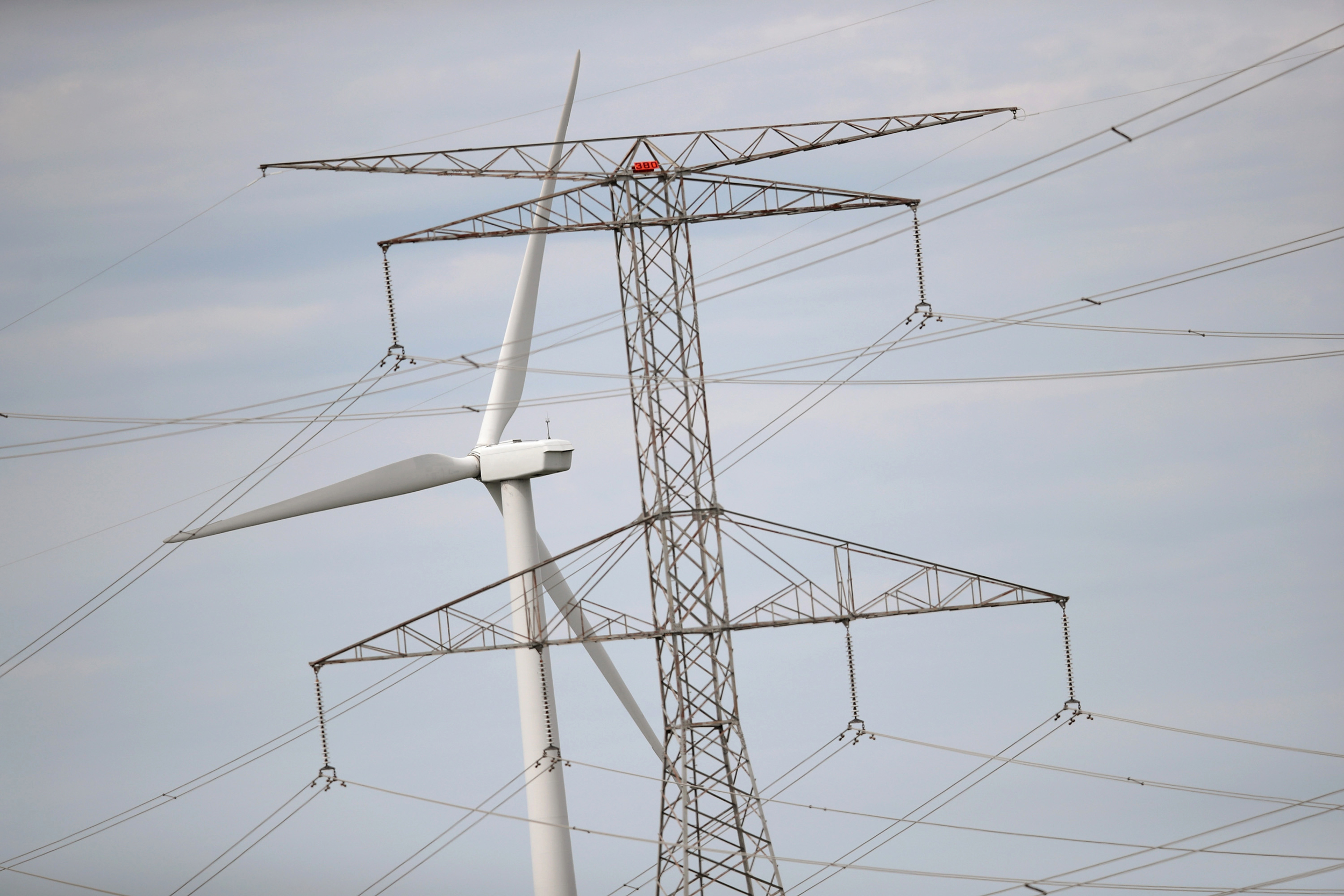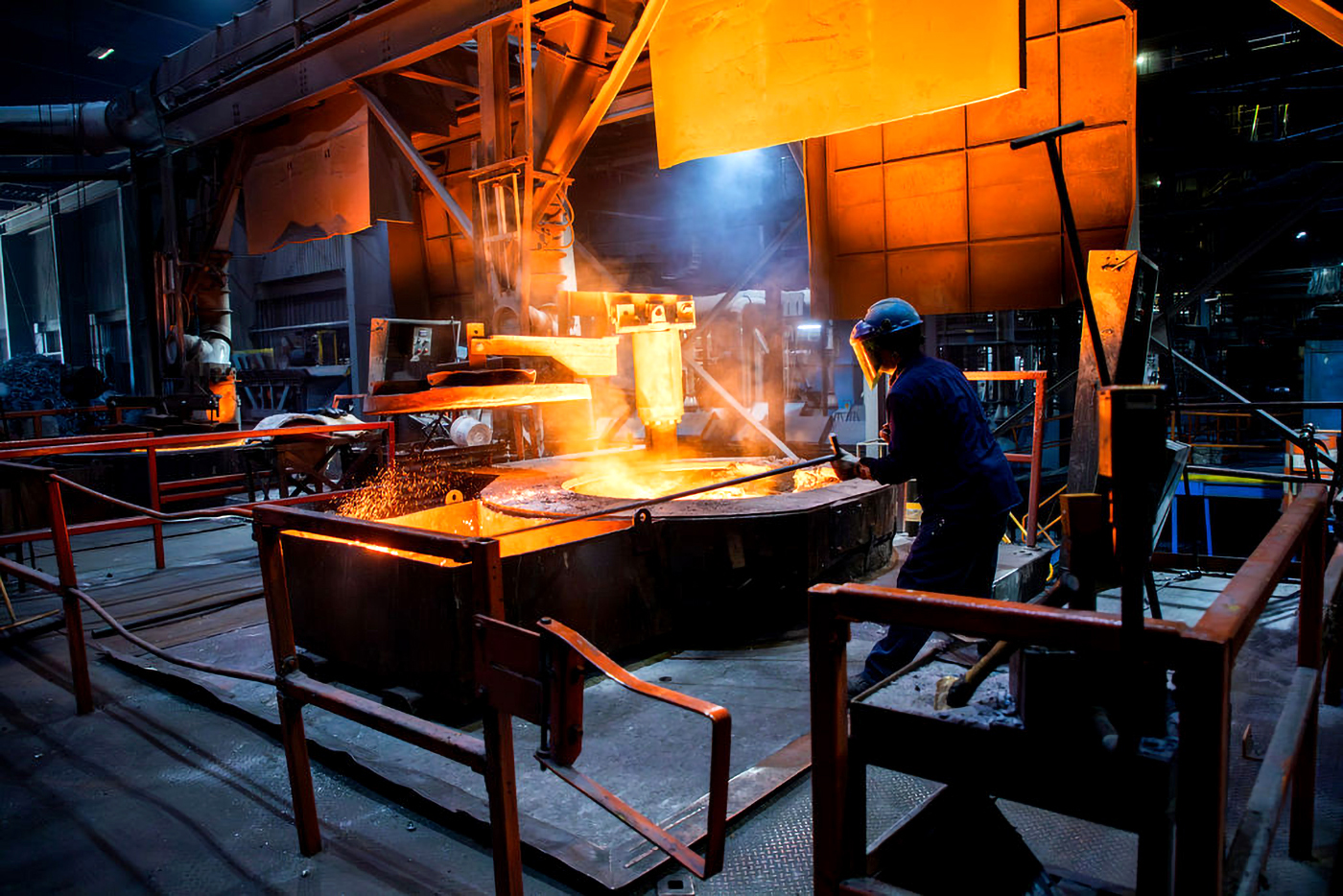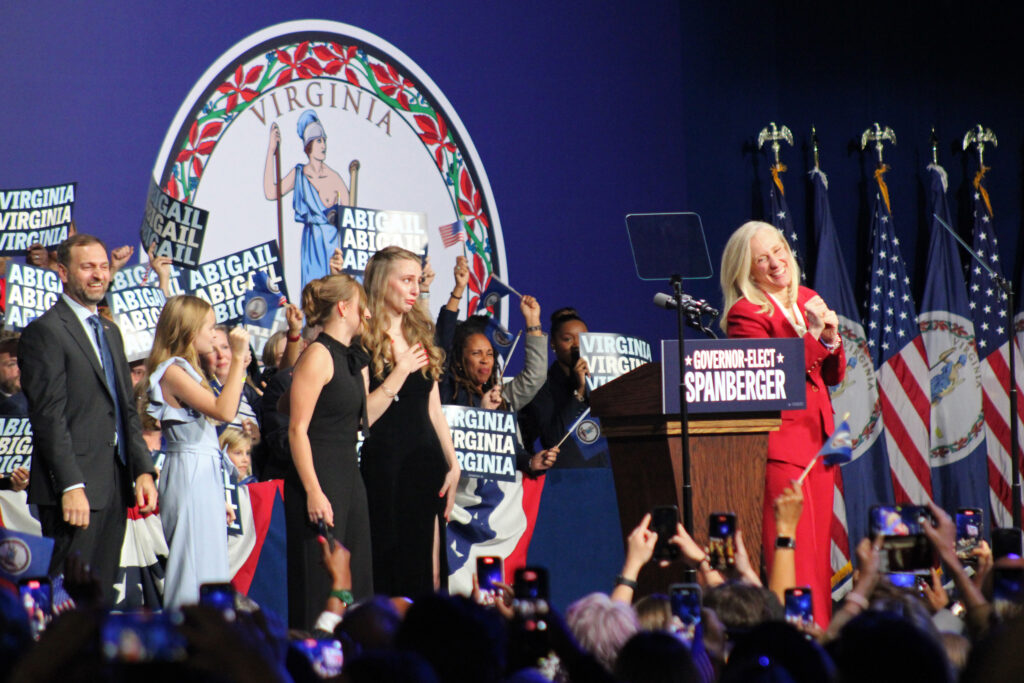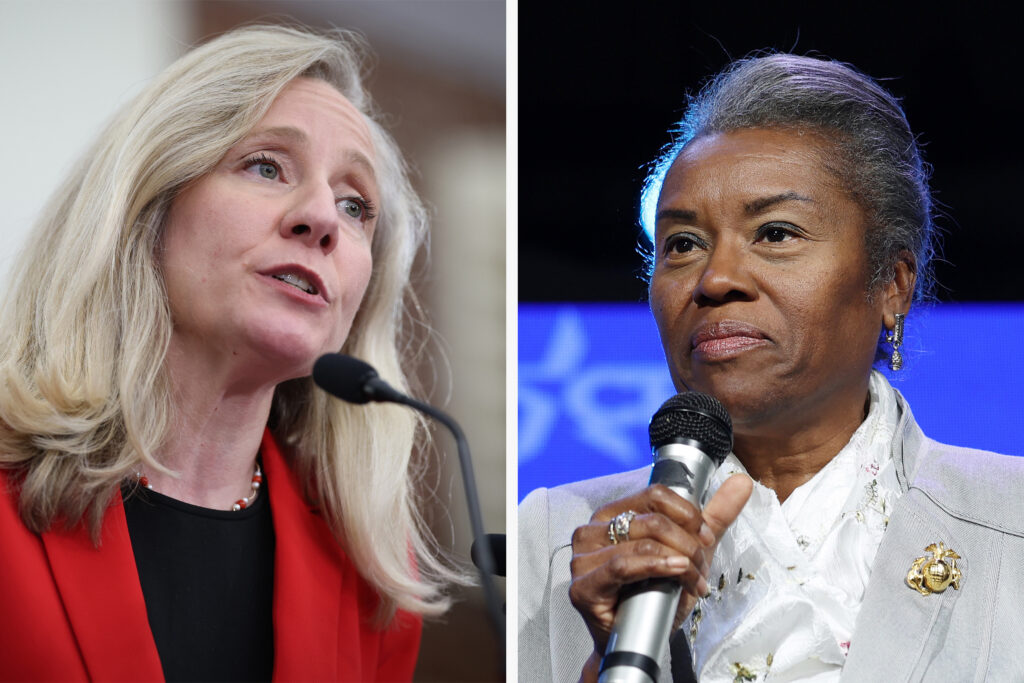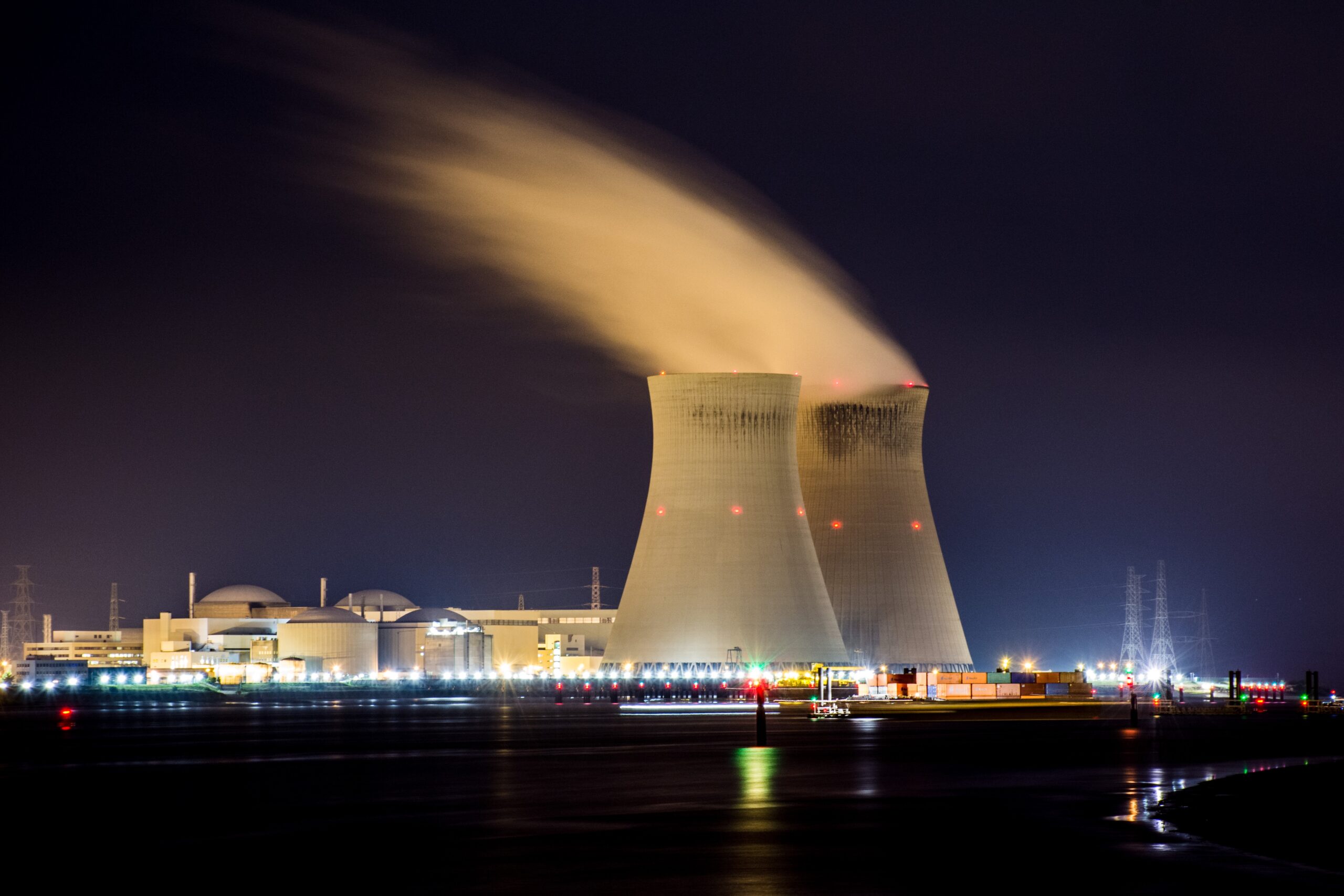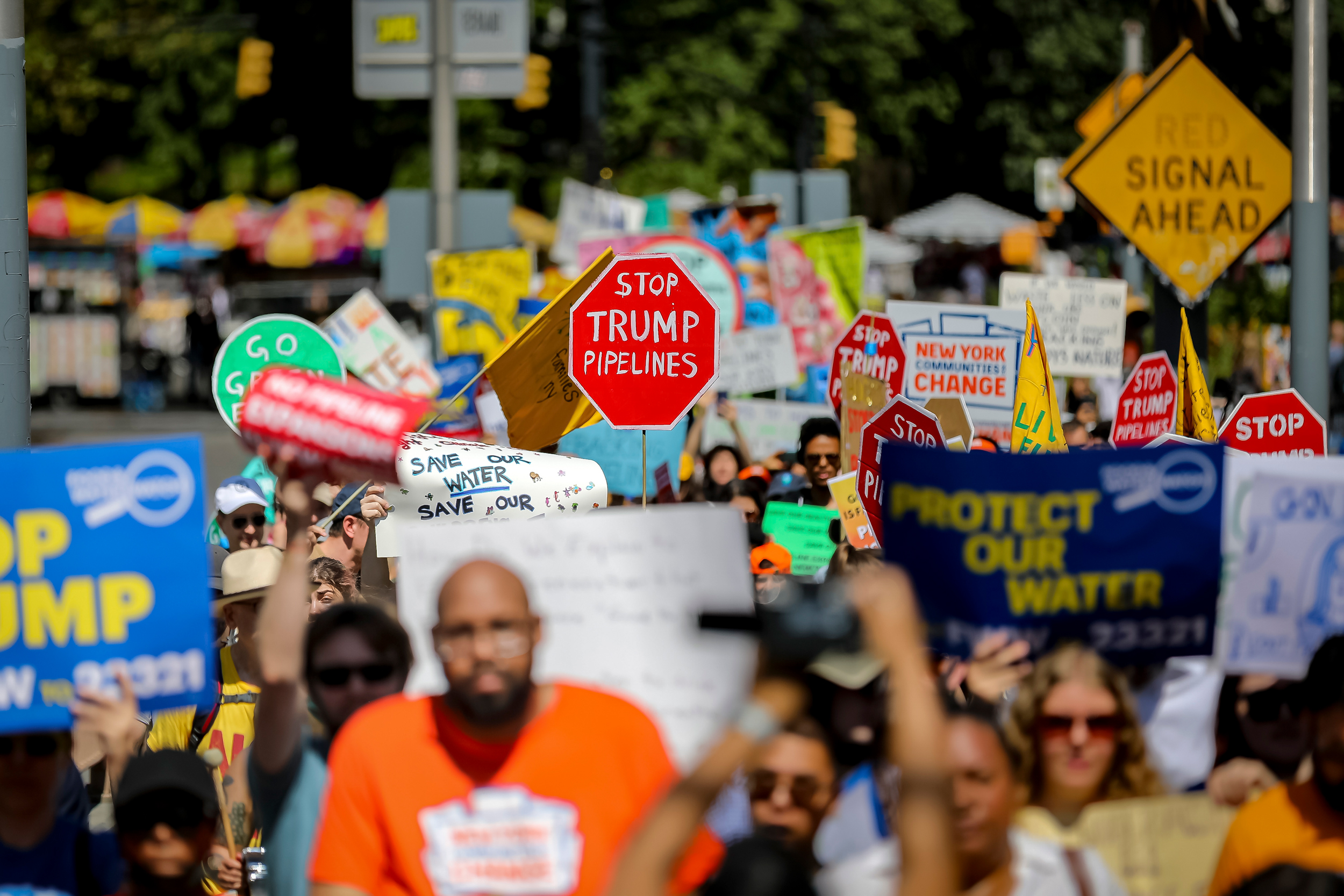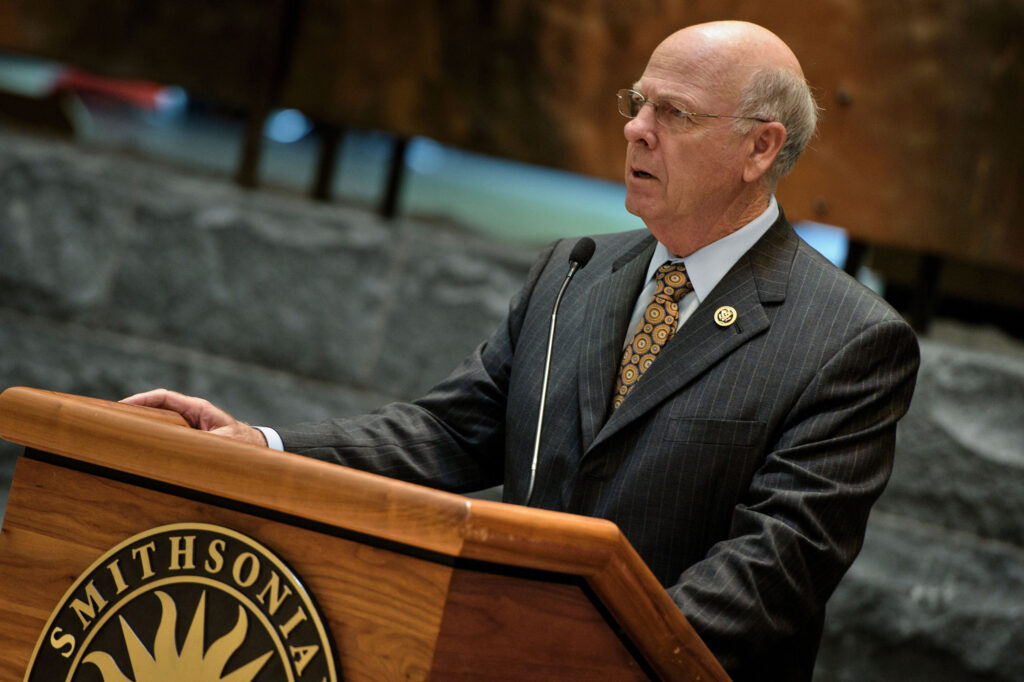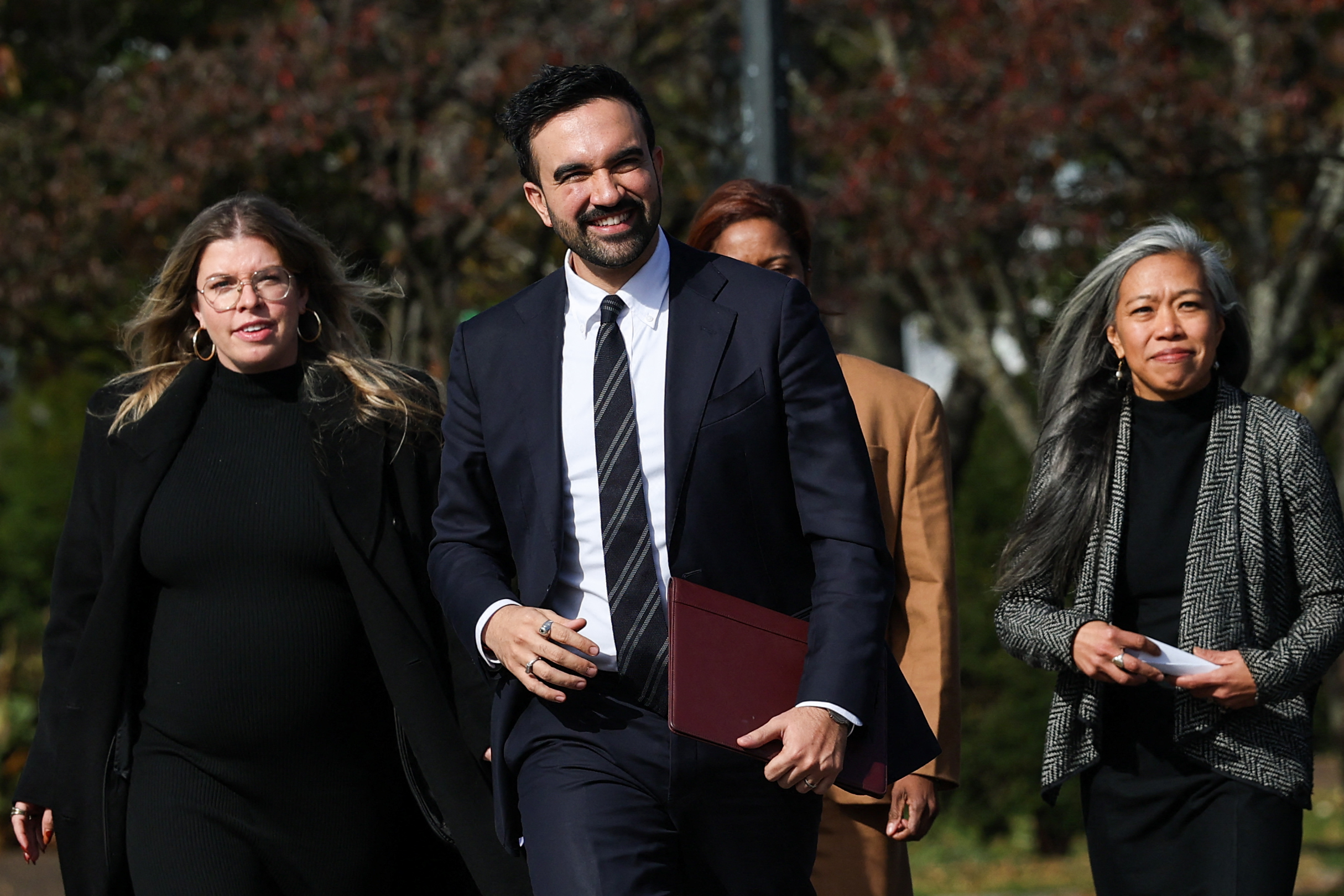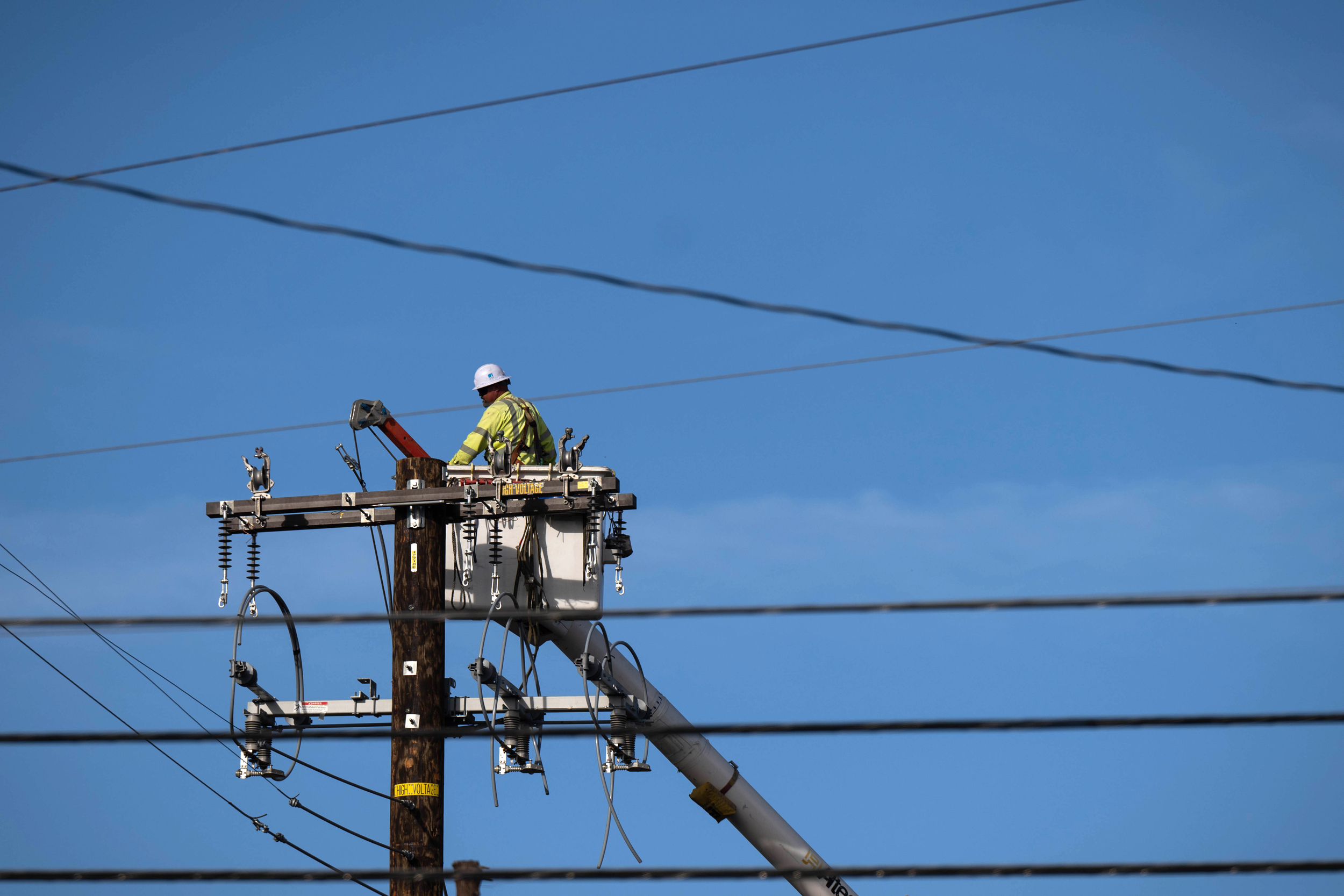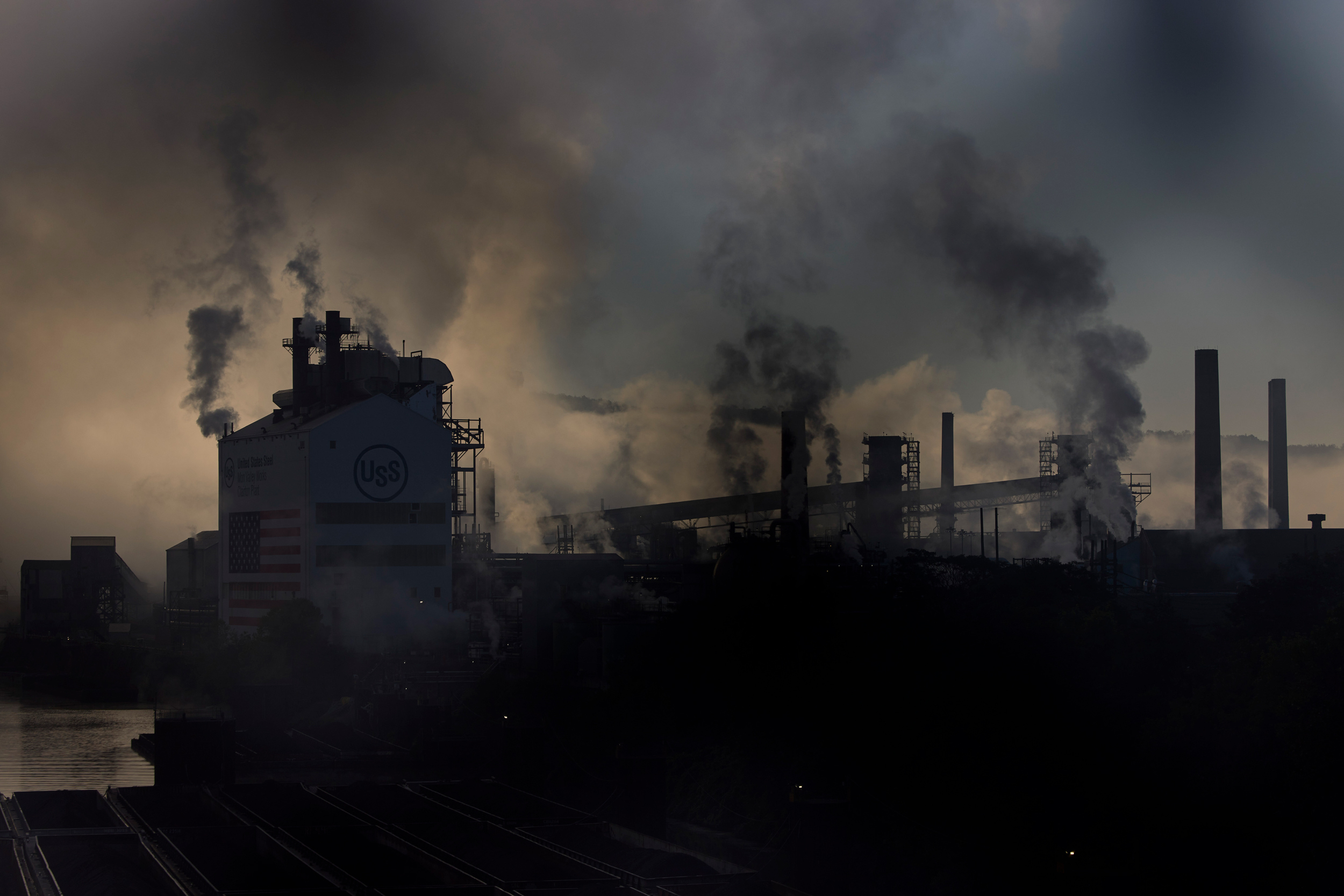Across the country, people fighting climate change and pushing for cleaner energy systems are facing a bleak new reality. President Donald Trump has upended their work with executive orders he signed in his first few hours in office.
While expected, his actions are still difficult to take for businesses and organizations that enjoyed some progress during the Biden administration and are now entering a more combative era.
Trump declared a national energy emergency to help increase production of fossil fuels on the same day that he withdrew the United States from the Paris Agreement and ordered a halt to new permits for offshore wind projects. He said he was stopping the release of any unspent federal money for EV charging and canceling an “EV mandate,” even though no such mandate exists. He also reversed a series of Biden orders that sought to make environmental justice a key factor in federal policymaking.
We’re hiring!
Please take a look at the new openings in our newsroom.
See jobs
To gauge the potential impact of Trump’s executive orders, Inside Climate News reporters interviewed dozens of energy experts and environmental activists in critical energy states and regions, from New York to California, Alaska to Florida. Here are their day one memos in what promises to be a long, intense American fight over the climate crisis.
State Action Will Be Key
This new era means states need to take the lead in protecting the climate and environment, said Howard Learner, CEO and executive director of the Environmental Law & Policy Center, a Chicago-based advocacy group that operates throughout the Midwest.
“We have a strategic plan in place, and we’re gearing up the necessary defense at the federal levels, and rolling up our sleeves to move forward on the offense [with] opportunities in the Midwest states,” he said.
He’s basing this on lessons learned in the first Trump administration, which turned out to be a time of progress in the Midwest thanks to what happened at the state level.
He said it’s important not to get distracted by Trump executive orders that are almost certain to get rejected in court, and by Trump’s bombastic statements, and focus on the administration’s moves that are most likely to do damage.
“Let’s not chase the Trumpian squirrels,” he said.
He’s focusing on actions that affect clean air and water, and he fears that Trump’s agenda of increasing fossil fuel production and rolling back environmental regulations will have immense costs for public health.
—Dan Gearino
A Call for Climate Solutions in Weather-Weary Florida
In Florida the orders heightened concerns about hotter temperatures, rising seas and more destructive hurricanes. The state weathered an extraordinary hurricane season last year that included Helene, the deadliest hurricane to strike the continental U.S. since Katrina in 2006, and Milton, which followed a mere 13 days later, inflicting wind and flood damage across the state.
“In the 25 years that I have been alive I’ve seen the impacts of climate change worsen first hand,” said Delaney Reynolds, a native of Miami and the Florida Keys. Reynolds is among the young Floridians who have filed multiple legal actions against the state over the climate policy here, with the advocacy group, Our Children’s Trust.

“Staying in the Paris accord allows the United States to be part of the global discussion when it comes to climate solutions, and honestly we haven’t been so much of a leader but it gives us the opportunity to be a leader on a global scale where we should be, as the supposed ‘greatest country in the world,’” said Reynolds, a University of Miami graduate student studying sea level rise. “We should be a leader on climate change and implementing solutions.”
She and others feared the executive orders would leave the nation’s climate policy in the hands of state and local governments. Florida Gov. Ron DeSantis, a Republican, signed legislation last year erasing several instances of the words “climate change” from the state code and nullifying goals aimed at enhancing renewable energy use in the state.
“For us, walking away from the Paris climate accord, it really abandons us,” said Yoca Arditi-Rocha, executive director of the CLEO Institute, a climate advocacy group based in Miami. “It’s kind of surrendering our chance to build the resilient future that we need. Abandoning the Paris accord is a missed opportunity to protect people’s homes.”
—Amy Green
The Climate Crisis is an Affordability Crisis, and New York is Vulnerable
In New York, Bob Cohen is outraged. As the policy director for Citizen Action for New York, a grassroots organization that fights for social, racial, economic and environmental justice, he knows that the rolling back of environmental regulation will have an outsized impact on many of the people he represents—low income and communities of color.
“The old expression goes that Nero fiddled while Rome burned,” said Cohen. “Well, this is a case where Trump is dumping coal and making Rome burn worse.”
Around 44 percent of the city’s census districts are home to environmental justice communities, according to the Mayor’s Office. The New York City Environmental Justice Alliance works to improve the lives of these residents. They advocated strongly for the state’s ambitious 2019 Climate Act, which imposes many targets for the state’s transition to renewable energy, often while prioritizing environmental justice communities.
“The climate crisis is an affordability crisis,” said Ko. “It is a cost of living crisis.”
— Eunice Ko, New York City Environmental Justice Alliance
“We need the governor to stand up tall and lead New York through this darkness and make sure we’re meeting our Climate Act mandates,” said Eunice Ko, its deputy director. “We’re reducing our emissions, but also really reducing this legacy pollution that sickens and kills a lot of the communities that we work with and serve.”
Both Ko and Cohen worry about Trump’s plan to blunt the impact of former President Biden’s Inflation Reduction Act which, among many things, offers tax credits and rebates to households who install clean energy technologies in their homes, like heat pumps. Subsidies like these are imperative to keeping people’s energy costs down, particularly at a time where utility bills across New York City are quickly increasing.
“The climate crisis is an affordability crisis,” said Ko. “It is a cost of living crisis. It will mean more rising grocery prices because of droughts and shortages as a result of that, it’s going to mean an increase in medical costs. There’s going to be increased energy bills if we continue to rely on fossil fuels.”
These groups, as part of the broad coalition NY Renews, have been fighting Gov. Kathy Hochul’s delay of the implementation of the cap-and-invest program, which was years in the making. The law would have put a cap on statewide greenhouse gas emissions, and would have required companies to essentially pay to pollute, funneling billions of dollars into a Climate Action Fund.
“It’s really terrible timing and a terrible disappointment,” said Cohen. “We can only, unfortunately, expect the federal government to obstruct us at this point.”
—Lauren Dalban
In the Mountain West, Some See Losses, Others See Wins
Trump’s executive orders were “disappointing but not surprising,” said Aaron Weiss, deputy director of the Center for Western Priorities, a nonpartisan advocacy group that works to protect Western land, water and communities.
Those communities may find it harder or impossible to access home-improvement funding if money earmarked for them under the Inflation Reduction Act is suspended, and local economies could suffer if on-shore wind production is halted.
In Wyoming, low-income residents could lose access to tens of millions of dollars to improve home energy efficiency. The United States Department of Agriculture has fielded 36 applications from Cowboy State residents for loans and grants to help cover the installation of solar panels, anaerobic digesters and energy storage facilities; rural electrical co-ops could receive money, too. Now, almost $850 million is in limbo.
The Wyoming Energy Authority had planned this year to begin distributing close to $70 million to help homeowners cover the cost of energy efficiency assessments, installing heat pumps or weatherization upgrades to windows and insulation. Trump’s executive order halted that money and the program’s timetable now appears uncertain.


Weiss suspected the Lava Ridge wind farm in south central Idaho, name-dropped in one of the orders, would not survive the Trump administration and added that a slowdown in wind turbine manufacturing would not be good for Colorado’s economy. He was somewhat hopeful that the IRA would demonstrate durability, and that the plummeting price of solar and wind energy would keep propelling the nation’s energy transition. “As much as President Trump wants to take us back maybe 30 years, that’s not where America’s economy is and that’s certainly not where the law is,” he said.
Kathleen Sgamma, president of the Western Energy Alliance, a trade group representing 10 Western states, said in an email that communities “near public lands may see more development as roadblocks to development on federal lands are removed.” She felt the orders’ chances of surviving legal challenges are good given “well established law” governing energy permitting.
—Jake Bolster
Actions Could Increase Energy Prices for Pennsylvanians
In Pennsylvania, where the Democratic governor, Josh Shapiro, has advocated for an “all of the above” energy strategy and publicly partnered with a fracking company, there is little “material difference” between the parties’ energy policies on the ground, said Shannon Smith, the executive director at FracTracker, a nonprofit that studies the impacts of oil and gas development.
“We’ve been rolling out the red carpet for Trump. There’s nothing really preventing the fracking industry in Pennsylvania from drilling all they want right now,” Smith said, arguing that fossil fuel industries had free rein even before Trump’s order promising to “unleash” American energy.
Natural gas production in Pennsylvania reached record highs during the Biden administration.


Increasing gas production will continue to impact public health, climate and the environment in Pennsylvania, as it has since the fracking boom began more than 20 years ago. Because newer wells are declining in productivity faster than older wells, Ted Auch, FracTracker’s Midwest program director, said, there are also huge implications for water usage and waste production.
Trump’s decision to end Biden’s pause on reviewing new applications for liquified natural gas export projects could further spur production in Pennsylvania—and could cost Pennsylvanians. A 2024 report from the consumer advocacy organization Public Citizen found that approving the export permits Biden put on hold could cost the state up to $16 billion in higher gas prices.
David Masur, the executive director of the environmental policy group PennEnvironment, said Trump’s executive orders would cost consumers, especially when it comes to rolling back energy efficiency standards. “President Trump ran on these kitchen table pocketbook concerns,” he said. “And yet, on his first day in office, he does something that will make people pay more than they have to on their utility bills.”
—Kiley Bense
The Back-and-Forth Over Expanded Resource Extraction in Alaska Continues
Trump devoted an entire executive order to Alaska, pledging to exploit the state’s natural resources “to the fullest extent possible.” Its provisions seek to rescind and replace a host of executive actions, rules and other steps by the Biden administration in an attempt to speed oil and gas drilling, mining and logging from the state’s Arctic North Slope to the Tongass National Forest in Southeast Alaska.
In the western Arctic, the order seeks to reverse protections on millions of acres of the National Petroleum Reserve in Alaska, where the Biden administration approved the controversial Willow oil project while advancing conservation measures in other areas.
Many of the regions and projects the order targets have been subject to a sustained back-and-forth between Democratic and Republican administrations. It seeks to advance oil and gas development on the Arctic National Wildlife Refuge’s coastal plain, for example, a protected area where the Trump administration had previously tried to advance drilling.
Many environmental groups criticized the new order’s targeting of the coastal plain and noted that oil companies seem to have little interest in drilling in the fragile ecosystem. A lease sale held this month by the Biden administration—as required by a law passed during the first Trump administration—did not receive any bids to drill.
The area is home to the calving grounds of a major caribou herd that provides sustenance for the Indigenous Gwich’in people.
Kristen Moreland, executive director of the Gwich’in Steering Committee, which has long fought drilling in the refuge, said her people call the coastal plain “the sacred lands where life begins.”
The caribou migrate to the plain to avoid mosquitoes and birth their calves, Moreland said, “and there’s no development up there, there’s no roads, there’s no structures, there’s nothing. Our whole land is pretty much that way. And if there’s any kind of oil development or any kind of drilling it could disturb our migratory routes for the caribou herd, so that’s why we’re in a fight.”
Others in Alaska have cheered Trump’s executive order. Gov. Mike Dunleavy, a Republican, had asked Trump to make many of the policy changes included in the order.
The Voice of the Arctic Iñupiat, a pro-drilling group that represents some Alaska Native communities and corporations on the North Slope, issued a statement praising Trump’s move.
“Today’s executive order takes a promising step towards reversing the damage of the previous administration’s policies that threatened our Iñupiaq way of life and stifled Alaska’s resources,” Nagruk Harcharek, the group’s president, said.
—Nicholas Kusnetz
Wind Lease Pause Threatens Economic and Energy Development in the East
The burgeoning offshore wind industry faces a major obstacle to growth with an executive order that pauses the awarding of new leases and launches an investigation of onshore and offshore wind farm leasing and permitting rules.
The order is an economic blow to states, mainly on the East Coast, that have set policies and passed laws to encourage the development of offshore wind. Companies that already have leases and permits can continue with those projects, which will take years. But once those projects are done, the industry would stop growing as long as the Trump administration wants to obstruct development.
Willett Kempton, a University of Delaware professor whose research covers offshore wind, said the order is bad policy at a time when the United States needs as much electricity as it can get to deal with rising demand.
“By choking our fastest-growing, lowest-cost new electricity sources, the order is a gift to our economic competitors who seek to surpass the United States in AI and other advanced computing technologies,” he said.
In North Carolina, the fate of two offshore wind energy projects, Kitty Hawk South and Carolina Long Bay, are in jeopardy.
“Wind energy is critical to achieving American energy dominance, meeting our growing electricity demand, and creating stable manufacturing jobs across the nation,” said Katharine Kollins, president of the Southeastern Wind Coalition. “Wind energy is a vital part of the global electricity system, and ceding the advancement and development of wind technologies to other nations will only set us back. In a time of energy emergency, an ‘all-of-the-above’ strategy to achieve American energy dominance must include wind along with all readily available domestic power sources.”
Avangrid Renewables owns the Kitty Hawk South Project lease area, which covers 122,000 acres and is located 27 miles offshore of Corolla, North Carolina. The wind installation is in early phases of construction and operations planning. A permit decision by the Department of Interior was not expected until 2028, although now that determination could be delayed indefinitely.
“By choking our fastest-growing, lowest-cost new electricity sources, the order is a gift to our economic competitors who seek to surpass the United States in AI and other advanced computing technologies.”
— Willett Kempton, University of Delaware professor
TotalEnergies and Cinergy Corp. are coordinating on a wind installation, Carolina Long Bay, 22 miles off the coast of Wilmington, that is in the earliest planning stages.
These projects would help meet targets set by former Gov. Roy Cooper, a Democrat, in a 2021 executive order. It set offshore wind development targets for North Carolina of 2.8 gigawatts by 2030 and 8 gigawatts by 2040.
Even without the executive order, North Carolina would miss that deadline by more than five years. Last fall, the state Utilities Commission approved Duke Energy’s carbon plan, which sets a goal of 2.4 gigawatts of offshore wind by 2035. Now the delay could be even longer.
—Lisa Sorg
Faster Permitting Will Make Tracking Pollution More Difficult
On the Gulf Coast of Texas, veteran activist Diane Wilson expects a wave of fast-tracked industrial projects, with pollution permitting and environmental review expedited through reform programs the new administration promises.
“There’s this huge anticipation to bring the bulldozers in and get going,” said Wilson, a 76-year-old retired shrimper. “They’re ready.”
Already since the election, ExxonMobil has revealed plans to build an $8.6 billion plastics plant in her area.
Permitting reform, she fears, will make it even harder for nearby residents to challenge new pollution sources planned near their homes, or to seek a hearing before a judge. She worries what it means for her pending challenges to an oil terminal expansion and a dredging project. Wilson, who has been defending environmental causes on the Texas coast for almost 40 years, said the new administration will give business-friendly state regulators license not to enforce environmental laws, knowing they won’t be investigated for wrongdoing.
“If there’s something to stop this rush to take over our bays and our resources, it’s going to have to come from the communities and the people,” Wilson said. “I think civil disobedience is going to be showing its head and I say go for it.”
—Dylan Baddour
Ordered Funding Cuts Could Weaken Maryland’s Climate Progress
Executive orders that would eliminate federal funding for electric vehicle infrastructure, loosen tailpipe emissions standards and halt offshore wind development could make Maryland’s climate goals less achievable.
The state’s targets include a 60 percent reduction in greenhouse gas emissions by 2031, 100 percent clean energy by 2035 and net-zero emissions by 2045. These objectives now face significant headwinds.


Jon Gordon, director of Advanced Energy United, struck a defiant note despite the setbacks. “It creates a lot of challenges, that’s daunting. But we are continuing to move forward and advocate for the clean energy transition,” he said. Gordon emphasized that renewables are now the most affordable energy source, a market force he believes even Trump’s policies can’t stop. “We’re working closely with Maryland leadership to protect the clean energy transition,” he added.
Quinton Scott, federal policy director at the Chesapeake Climate Action Network, was less optimistic. “We fought so hard over the last four years … all those things were reversed yesterday,” he said. Scott said Trump’s order pausing offshore wind permits was a blow, throwing Maryland’s goal of generating 8.5 gigawatts of offshore wind energy into uncertainty. “Access to federal land is now in doubt,” he said. —Aman Azhar
Resolving California’s Water Issues Isn’t as Simple as “Putting People Over Fish”
As the death toll from the Los Angeles fires continues to climb, Trump has repeatedly attacked state Democrats for diverting water to protect what he called “an essentially worthless fish,” referring to the Delta smelt, an endangered species found only in the San Francisco Estuary.
On Monday, Trump signed a memorandum, Putting People over Fish: Stopping Radical Environmentalism to Provide Water to Southern California, that will “route more water from the Sacramento-San Joaquin Delta to other parts of the state for use by the people there who desperately need a reliable water supply.”
The notion that California is “diverting all this water to protect the smelt isn’t accurate,” said Karrigan Börk, an ecologist, law professor and interim director of the University of California, Davis, Center for Watershed Sciences. “The operation of the pumps in the Delta, and the way we move water across the Delta is really constrained by the hydrology, by the way water flows through that system,” he explained. “It takes a lot of water to keep the water in the Delta fresh.”
That means managers must release “a whole lot of water” from reservoirs throughout the northern part of the state to be able to send fresh water to the Central Valley and Southern California instead of the saltwater that would naturally come into the Delta, Börk said. “We can’t suddenly change the way we’re operating the Delta and pump a whole lot more water without bringing in saltwater.”
Börk sees the memorandum as setting up a false dichotomy. “I think the people of California value both protecting our ecosystems and having water for human use. And I think that using the LA fires to try and justify and ram through a new approach to water use in California is disingenuous and disrespectful to the people of LA.”
During Trump’s last administration, he was able to increase water flows to the valley and Southern California by only 5 percent, but it took his whole first term, Börk said. “And it promptly ended up in court. I suspect we’ll see something similar this time.”
—Liza Gross
The View from Washington
Big environmental groups in Washington were grappling with the roll-out of a more aggressive energy agenda.
During Trump’s first term, they were able to block many of his actions in the courts. Since then, the make-up of the courts has changed and the Supreme Court has a 6-3 majority that is skeptical of the power of federal agencies to act on climate change. Nevertheless, environmental group leaders are determined to fight to defend the steps that President Joe Biden’s administration took to curb greenhouse gas pollution.
“The Trump administration is coming in more well-organized than they were eight years ago,” said Manish Bapna, president of the Natural Resources Defense Council. “But so are we.”
One example of how the Trump team is pushing the envelope: The president has ordered a review of the Environmental Protection Agency’s 2009 finding that greenhouse gases are a danger to human health and the environment. In his first term, the EPA issued weak greenhouse gas rules, but the review signals this White House is now weighing the possibility of not regulating greenhouse gases at all. If the endangerment finding were overturned, the EPA would have no obligation to act on climate under the Clean Air Act.


Bapna said the move is “truly outrageous when we’re seeing what is happening in LA today, and what we’re seeing in the Gulf Coast, what we saw in North Carolina.”
“If anything, the science attributing climate change to extreme weather events is so much stronger today than it was eight years ago,” Bapna said, noting that the Supreme Court has declined three times to overturn the endangerment finding.
NRDC sued the first Trump administration 163 times, winning 88 percent of its cases, he said. Bapna said his group is prepared to go to court again, not with ideological arguments, but arguments based on “objective evidence.”
“The courts have shifted, and we need to think hard about how we think about litigation in this moment in time,” Bapna said, “but rest assured, when the Trump administration breaks the law, we will be there to sue.”
Fossil fuel backers were pleased with Trump’s orders.
“This is a new day for American energy, and we applaud President Trump for moving swiftly to chart a new path where U.S. oil and natural gas are embraced, not restricted,” said Mike Sommers, president and CEO of the American Petroleum Institute, in a statement.
—Marianne Lavelle
Hawaii Prepares to Act on the Local Level
Concern over Trump’s opposition to the development of wind energy resources extends to Hawaii, said Kaniela Ing, national director of the Green New Deal Network and former Maui representative in the state legislature.
“The most striking things are the attacks against wind energy because that’s something that, on our islands, we’ve been on the forefront of,” Ing said.
Hawaii has a statewide goal of 100 percent renewable energy by 2045, which would include a significant increase in wind energy. Trump’s temporary withdrawal of offshore wind lease sales in federal waters also pauses the issuance of new permits, approvals and loans for both onshore and offshore wind projects, which could impact plants in Hawaii. Existing efforts to decommission old wind plants, recycle the parts and build new ones may be hindered by a lack of federal support, Ing said.
The speed of Trump’s action to curb renewable energy and bolster fossil fuels didn’t faze him.
“We’ve been preparing for this sort of thing for years now,” he said. He expressed confidence in Hawaii Gov. Josh Green’s commitment to the state’s climate goals and emphasized local efforts to boost renewable energy, like efforts to promote public ownership of the energy grid—which he noted have aided the transition to renewable energy in parts of the state.
“I think people are either dispirited or exhausted, or just don’t see the way forward, or any hope in fighting back,” Ing said. “We want to create spaces where people can actually gather and plan things out locally, in communities.”
—Keerti Gopal
Natural Gas Orders Could Worsen Warming, Water Quality
Climate advocates expressed varying levels of concern over Trump’s executive orders as they pertain to methane, the second leading driver of global warming after carbon dioxide.
Sharon Wilson, a climate advocate who spends much of her time criss-crossing West Texas documenting emissions of methane and other pollutants from the oil and gas industry, said the orders were alarming.
Wilson noted that when she visits Midland, Texas, the hotel where she stays gives her bottled water because the tap water isn’t safe to drink.
Wilson said an executive order that ends a Biden Administration pause on permitting for new liquified natural gas export terminals will only make the water and air pollution worse for those who can least afford it.
“LNG requires more drilling, more fracking, more processing, more compressor stations, more pipelines and more power plants,” Wilson, the director of Oilfield Witness, said. “Each one of those kinds of facilities will have a permit allowing it to release tons of pollution per year.”
That means “more methane, more global warming, more suffering and more death,” Wilson added.
Durwood Zaelke, president of the Institute for Governance and Sustainable Development, was more hopeful.
Zaelke expressed cautious optimism that regulations developed under the Biden administration, including a first of its kind fee on excessive methane emissions from the oil and gas sector, would remain. The regulations were designed in part so that U.S. LNG exports would meet regulations for LNG imports to Europe, which will soon enforce maximum allowable methane intensity levels for imported fossil fuels.
“It’s going to be better for them to stick with the regulations that they have, because the biggest buyer is Europe, and Europe is going to demand better performance on methane,” Zaelke said.


The initial executive orders did not mention the methane fee. The fee was passed through Congress as part of the Inflation Reduction Act and would therefore require congressional action to roll back. However, the measure could be weakened through lax enforcement, David Lyon, a research scientist at the University of Texas at Austin said.
“They might just keep it on the books, but just not bother collecting it, or allow companies to claim a lot of the exemptions and not really have a lot of oversight on how legitimate those exemptions are,” Lyon said.
The order that ended the pause on LNG also revoked two orders that established and supported the State Department’s Special Presidential Envoy for Climate. The envoy worked closely with Chinese officials on efforts to reduce methane emissions and other climate super pollutants in the U.S. and China, the world’s leading greenhouse gas emitters.
“While the Climate Envoy may be officially finished, the innovations [John] Kerry and [John] Podesta and team set in motion have enough momentum to transcend today’s politics,” Zaelke said.
—Phil McKenna
In Ohio, Fear of Job Losses
Ohio was the first state in the country to open an EV charging station funded by the 2021 federal infrastructure law. The program that provided the funding will not issue any new awards, according to one of Trump’s initial orders.
Michael Benson, a retired firefighter in the Akron area who runs a consulting business for local governments that are considering a shift to EVs, is disappointed.
“The idea that the system is rigged to get us to buy EVs is a complete misunderstanding of the reality,” he said. “We’ve been subsidizing fossil fuels for over a century.”
But some of Trump’s actions on EVs may not have much of an effect. The federal government has already committed much of the money for charging stations to the states. And this order is among the many that are likely to face legal challenges.
Trump referred to repealing an “EV mandate” in his order, which is the same phrase he used during the campaign to refer to Biden administration policies that aimed to increase adoption.
“We’ve been subsidizing fossil fuels for over a century.”
— Michael Benson, EV consultant
“There wasn’t ever a mandate,” said Mryia Williams, executive director of Drive Electric Columbus, which has members across central Ohio.
One of her concerns is that Trump will slow the growth of EV adoption enough to jeopardize jobs at Ohio factories that make EVs and batteries. She thinks this would cede global leadership of the auto industry to China, while harming the environment and economy of the United States.
“We’re going to fall behind in the global market because of these kinds of changes,” she said.
—Dan Gearino
About This Story
Perhaps you noticed: This story, like all the news we publish, is free to read. That’s because Inside Climate News is a 501c3 nonprofit organization. We do not charge a subscription fee, lock our news behind a paywall, or clutter our website with ads. We make our news on climate and the environment freely available to you and anyone who wants it.
That’s not all. We also share our news for free with scores of other media organizations around the country. Many of them can’t afford to do environmental journalism of their own. We’ve built bureaus from coast to coast to report local stories, collaborate with local newsrooms and co-publish articles so that this vital work is shared as widely as possible.
Two of us launched ICN in 2007. Six years later we earned a Pulitzer Prize for National Reporting, and now we run the oldest and largest dedicated climate newsroom in the nation. We tell the story in all its complexity. We hold polluters accountable. We expose environmental injustice. We debunk misinformation. We scrutinize solutions and inspire action.
Donations from readers like you fund every aspect of what we do. If you don’t already, will you support our ongoing work, our reporting on the biggest crisis facing our planet, and help us reach even more readers in more places?
Please take a moment to make a tax-deductible donation. Every one of them makes a difference.
Thank you,




